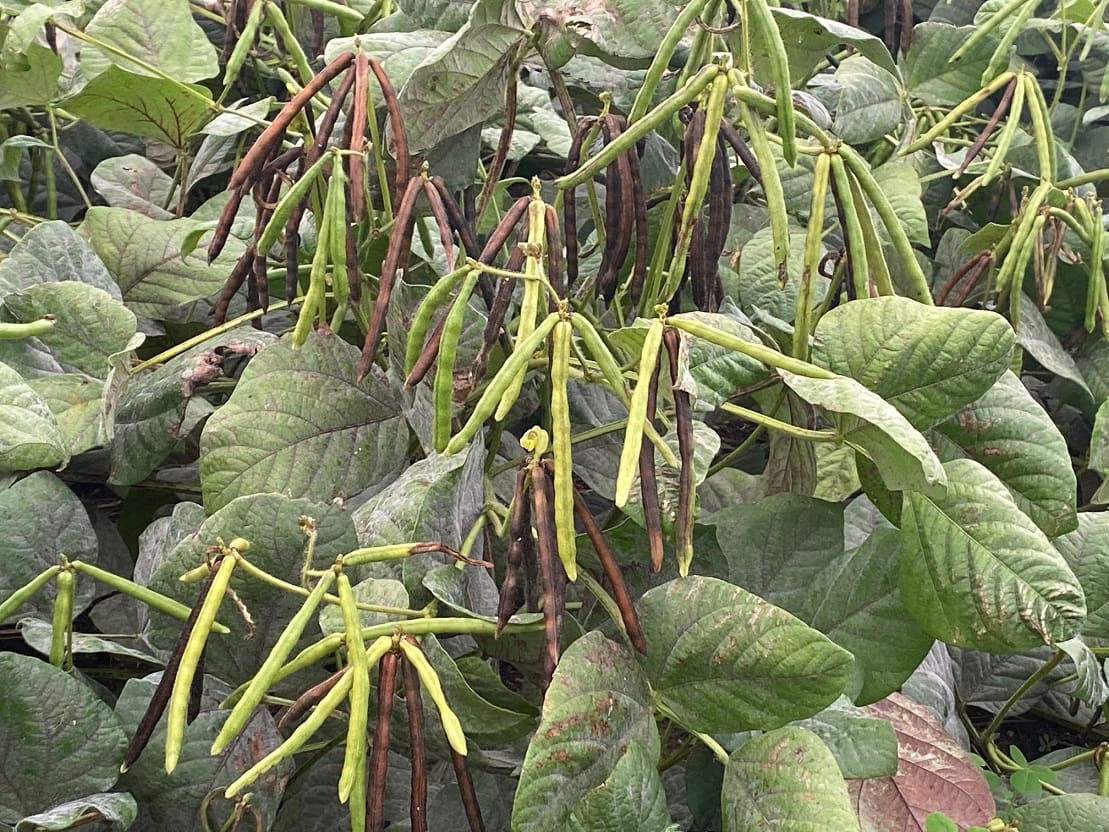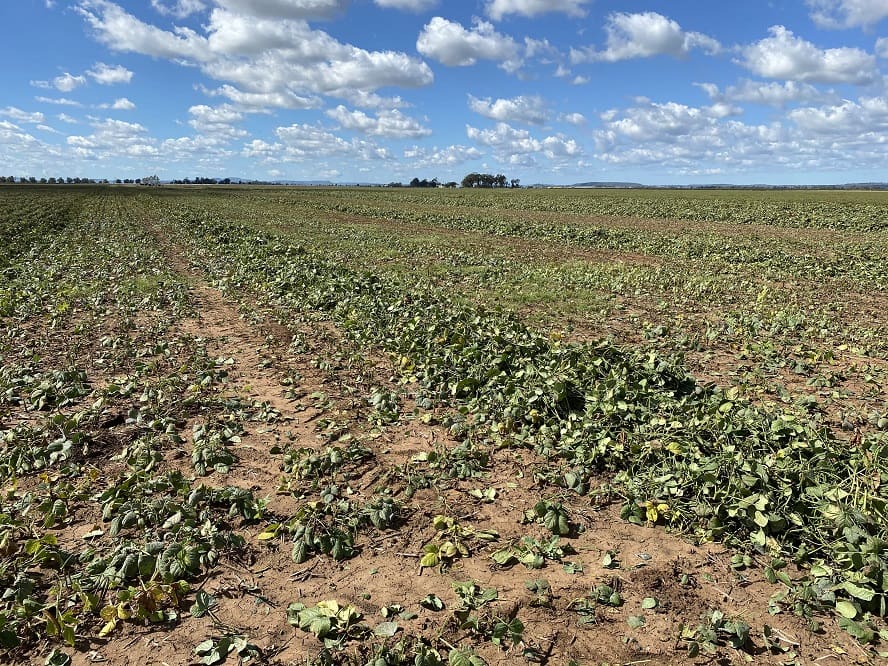
Mungbean growers are having difficulty deciding when to spray out and harvest their crops due to a challenging finish.
MUNGBEAN growers are facing the dilemma of when to spray out and harvest their crops as heavy rains in late March throughout the northern growing regions triggered secondary flowerings and created a mix of grain maturities on individual plants.
Adding to that, mice are playing havoc with some crops and a run of cooler, autumn temperatures is slowing crop development.
The widespread, week-long rains across the eastern seaboard in March, which led to major flooding on the New South Wales coast and drenched many inland cropping areas, came at an unwelcome time for mungbean crops.
Northern region extension agronomist, Paul McIntosh, said the rain was 10 weeks too late to prompt a massive planting of mungbeans and four weeks too late to boost the yields of the crops that were sown.
“But it was right, smack bang in the reproductive stages so that in a lot of eastern Australia we ended up having two crops – the first crop which was mediocre to small of black mature pods and the second crop coming on with flowering and green pods everywhere,” he said.
“Everyone has been scratching their heads saying ‘What do we do?’.
“The second crop is a lot bigger as far as yield per hectare goes than the first miserable crop.
“It has been a very difficult time for farmers and their agronomists to make some executive decisions on what to do with a mungbean crop that has two or three crops on the one plant. It’s a question of timing of desiccation and timing of harvest.”

Many mungbean crops have pods with a range of maturities on individual plants.
Mice damage
Adding to the difficulty for farmers, Mr McIntosh said mice were creating significant damage to and reducing the yield potential of many crops as each day went by.
“The longer the crop is there the more the mice have given it a flogging in some areas,” he said.
“For those with crops still in the ground, while they have had good weather lately the mice are really taking their toll, particularly in NSW and around Warwick in southern Queensland.
“Some people are sacrificing mungbean quality by getting the crops off the paddocks because the mice have been taking potential yield.”
Cool finish
Mr McIntosh said the recent run of cool weather was also taking away the heat units that mungbeans needed to develop and reach maturity.
“The cool time in April is really not helping mungbeans as they go through the development and podding period they are in now. A lot of things we didn’t want to happen are happening in April,” he said.
“So, it is anybody’s guess how it all ends up, but there are a lot of difficult decisions being made about mungbean desiccation and swathing at the present moment.”

A swathed crop of mungbeans.
Quality downgrades
Deacon Seeds general manager, Mark Schmidt, said the challenging finish to the season was likely to impact the quality of beans coming through to the market.
“It is hard for the grower to make the decision when to spray the crop out because when there are two or three stages there are ripe beans, beans that are just about ripe and beans that are immature. Ultimately, they have to make the decision when they feel the best time is to take the crop out,” he said.
“When the crop comes in we are going to be faced with beans that have been mature for a period of time, beans that are just right which are perfect, and beans that are immature.
“This year we will probably see a lot of the lower quality, manufacturing grade coming through. And we will have a lot more brittle grain being graded out because it will just break up as flints because it is over-ripe.
“We could even have a higher loss with the immature beans having to come out as well.
“Thankfully a lot of overseas buyers buy manufacturing grade, so there are plenty of markets for manufacturing. But the buyers will be disappointed because last year we spoilt them with predominantly Number 1 and really good manufacturing quality, whereas this year they will end up with all the poorer quality beans.”
Mr Schmidt said growers were “copping a double whammy” with variable yields from a mixed season and lower quality, manufacturing-grade beans due to the multi-stages in the crop.
“Growers won’t be receiving the higher prices, it will be more the lower prices. But most growers, if they have done hectare contracts, would have signed up to a multi-grade contract where it had a processing or manufacturing price in the contract,” he said.
Grain Central: Get our free cropping news straight to your inbox – Click here



HAVE YOUR SAY